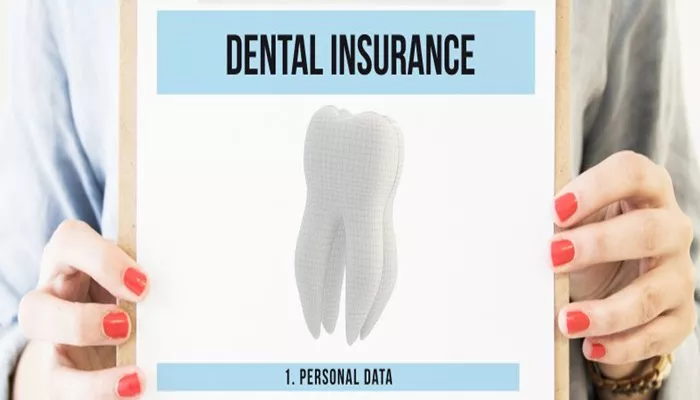Dental insurance is an essential component of maintaining oral health, providing financial protection against the high costs of dental treatments. One increasingly popular option is dual coverage dental insurance, which combines multiple insurance plans to offer more comprehensive coverage. This article aims to provide a detailed introduction to how dual coverage dental insurance works, with a focus on its benefits, how it operates, and how to maximize its use. By understanding the intricacies of dual coverage dental insurance, individuals can make informed decisions about their dental health care.
Understanding Dual Coverage Dental Insurance
Dual coverage dental insurance involves having two or more dental insurance plans that cover different aspects of dental care. This can include a combination of private dental insurance, employer-provided dental insurance, and even government-funded dental programs. The primary goal of dual coverage is to provide more comprehensive dental care coverage, ensuring that individuals can access the necessary treatments without facing significant financial burdens.
How Dual Coverage Works in Practice
Combining Different Plans
Dual coverage dental insurance often involves combining plans with different benefits and coverage levels. For example, one plan may cover preventive care such as regular check-ups and cleanings, while another plan may cover more complex treatments like fillings, crowns, or orthodontics. By having both plans, individuals can ensure that they are covered for a wider range of dental services.
Coordinating Benefits
When using dual coverage, it’s crucial to coordinate the benefits of each plan. This involves understanding the coverage limits, deductibles, and copayments of each plan. For instance, if one plan covers 80% of the cost of a filling and the other plan covers 20%, individuals can submit claims to both plans to maximize their reimbursement. However, it’s important to note that some plans may have coordination of benefits clauses, which limit the total reimbursement an individual can receive from multiple plans.
Using In-Network Providers
Many dental insurance plans offer in-network providers, who have agreed to accept the plan’s rates for services. Using in-network providers can help reduce out-of-pocket costs and ensure that treatments are covered by the insurance plan. When using dual coverage, it’s essential to check if the dentist or specialist is in-network for both plans. This can help maximize the benefits of each plan and minimize any unexpected costs.
Understanding the Hierarchy of Benefits
In some cases, dual coverage dental insurance plans may have a hierarchy of benefits. This means that one plan may be primary, and the other plan may be secondary. The primary plan will pay first, and any remaining costs will be covered by the secondary plan. Understanding the hierarchy of benefits is crucial to avoid any confusion or disputes when submitting claims.
Benefits of Dual Coverage Dental Insurance
Comprehensive Coverage
Dual coverage dental insurance provides more comprehensive coverage than a single plan. By combining different plans, individuals can ensure that they are covered for a wider range of dental services, from preventive care to complex treatments. This can provide greater peace of mind and financial security when facing dental health issues.
Cost Savings
Dual coverage can help reduce the overall cost of dental care. By having multiple plans, individuals can maximize their reimbursement and minimize out-of-pocket expenses. This can be particularly beneficial for families or individuals with complex dental needs, who may require multiple treatments over time.
Access to Specialists
Some dental insurance plans may have limited coverage for specialists or advanced treatments. By having dual coverage, individuals can access a wider network of specialists and advanced treatments, ensuring that they receive the best possible care for their dental health needs.
Flexibility and Choice
Dual coverage dental insurance provides greater flexibility and choice in dental care. Individuals can choose from a wider range of dentists, specialists, and treatments, knowing that they are covered by multiple plans. This can help ensure that individuals receive the care they need, when they need it, without facing significant financial barriers.
Maximizing Dual Coverage Dental Insurance
Regular Check-ups and Cleanings
Preventive care is crucial for maintaining oral health and reducing the risk of more complex treatments in the future. By using dual coverage to cover regular check-ups and cleanings, individuals can catch potential problems early and avoid more expensive treatments.
Understanding Plan Details
It’s essential to understand the details of each dental insurance plan, including coverage limits, deductibles, copayments, and any coordination of benefits clauses. This can help individuals make informed decisions about their dental care and maximize their reimbursement from each plan.
Staying Informed
Dental insurance plans can change over time, so it’s important to stay informed about any updates or changes to coverage. This can help ensure that individuals continue to receive the benefits they need and avoid any unexpected costs.
Seeking Professional Advice
Dental professionals can provide valuable advice about dental insurance plans and how to maximize their benefits. By consulting with a dentist or dental hygienist, individuals can gain a better understanding of their dental health needs and how dual coverage can help meet those needs.
Conclusion
Dual coverage dental insurance is a valuable tool for maintaining oral health and managing the costs of dental care. By combining different plans, individuals can ensure that they are covered for a wider range of dental services, from preventive care to complex treatments. Understanding the intricacies of dual coverage, such as coordinating benefits, using in-network providers, and understanding the hierarchy of benefits, can help individuals maximize their reimbursement and minimize out-of-pocket expenses. By staying informed and seeking professional advice, individuals can make informed decisions about their dental health care and ensure that they receive the best possible care for their needs.
Related topics:

